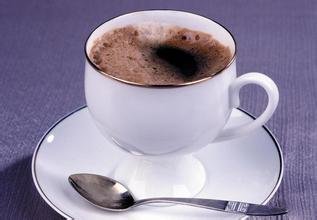El Salvador Coffee Santa Ana Volcano Region Renas Estate Introduction
El Salvador is also part of the former Mayan empire, and there are still more than 300 Mayan relics to visit, especially those of San Andres.
[organic planting]:
The civil war in the 1980s made many coffee farmers in war zones unwilling to spend agricultural fertilizer on coffee plantations, resulting in the fact of "organic planting". After the war, coffee plantations with organic cultivation were set up with the assistance of the government, and many of them obtained the Eco-ok certification of the Rainforest Alliance (Rain forest-Alliance). At present, 2000 hectares of coffee plantations are organically certified, and another 2000 hectares are in the process of being certified (it takes three years from application to obtaining organic certification).
[planting profile]:
In the 19th century, coffee in El Salvador was an important cash crop, and the government legislated to collect taxes and encourage planting and export. although coffee farmers in El Salvador could not get technical or financial assistance, they were in the growth of production per hectare, it is quite excellent among many coffee-producing countries! The output value of coffee is like a locomotive, which contributes a lot to the basic transportation construction, the development of light industry and even the progress of mechanization.
The country has 10 per cent forest cover, of which more than 80 per cent is natural shaded woodland, which is ideal for the planting of coffee trees (shade grown coffee), which is very important for the Central American ecological corridor (Central American Biological Corridor). But in 1970, there was a serious coffee leaf rust spot (coffee leaf rust disease). In order to expose coffee trees to the sun, many shade trees were cut down! This has caused a lot of environmental damage! But the civil war has also formed a turning point for the environment!
The civil war in 1980 caused government forces and guerrillas to deal a blow to the coffee industry, as well as natural disasters
And the sharp drop in international raw bean prices between 1986 and 1987 have had a negative impact on the coffee industry. in fact, 80 years ago, the foreign exchange earned by coffee also assisted the country's clothing industry and contributed to the Ministry of Light Industry.
And the marketing and export controlled by the government is even more disadvantageous to the whole industry! In the first year of the establishment of Incaf'e, coffee production fell from 175000 tons in 1979 to 141000 tons in 1986, of course, as a direct result of producers' reluctance to invest again; Incaf'e not only charged 50% of the export price of raw beans but also often delayed payment! Natural disasters and man-made disasters have led to good opportunities for organic planting. Of course, producers also realize that only good coffee can have a good price. Under the consideration of both substance and environmental protection, Samaritan coffee has a good start.

Important Notice :
前街咖啡 FrontStreet Coffee has moved to new addredd:
FrontStreet Coffee Address: 315,Donghua East Road,GuangZhou
Tel:020 38364473
- Prev

Costa Rican coffee with a unique aroma and strong processing method Western Valley
Located about 30 kilometers northeast of San Jose, Costa Rica's capital, this research center belongs to the Costa Rica Coffee Association, which is Costa Rica's national research institution for coffee planting, breeding and quality inspection of Brazilian coffee. In addition, it also has 10 hectares of experimental fields planted with many excellent varieties. Coffee is Costa Rica's main agricultural product, producing more than 2 million bags a year.
- Next

Alpine Coffee Honduran Coffee beans San Juan Heido Santa Barara Manor
Honduran coffee comes from El Salvador. At first coffee production was in a state of unavoidable heat until the frost in Brazil in 1975. At that time, Brazil was hard hit and coffee production plummeted, while Honduras took the opportunity to take advantage of the surge in coffee production from 500000 bags to 1.8 million bags and was ransacked. It was only after that that coffee production in Honduras really developed. Now, Honduran coffee.
Related
- Does Rose Summer choose Blue, Green or Red? Detailed explanation of Rose Summer Coffee plots and Classification in Panamanian Jade Manor
- What is the difference between the origin, producing area, processing plant, cooperative and manor of coffee beans?
- How fine does the espresso powder fit? how to grind the espresso?
- Sca coffee roasting degree color card coffee roasting degree 8 roasting color values what do you mean?
- The practice of lattes: how to make lattes at home
- Introduction to Indonesian Fine Coffee beans-- Java Coffee producing area of Indonesian Arabica Coffee
- How much will the flavor of light and medium roasted rose summer be expressed? What baking level is rose summer suitable for?
- Introduction to the characteristics of washing, sun-drying or wet-planing coffee commonly used in Mantenin, Indonesia
- Price characteristics of Arabica Coffee Bean Starbucks introduction to Manning Coffee Bean Taste producing area Variety Manor
- What is the authentic Yega flavor? What are the flavor characteristics of the really excellent Yejasuffi coffee beans?

